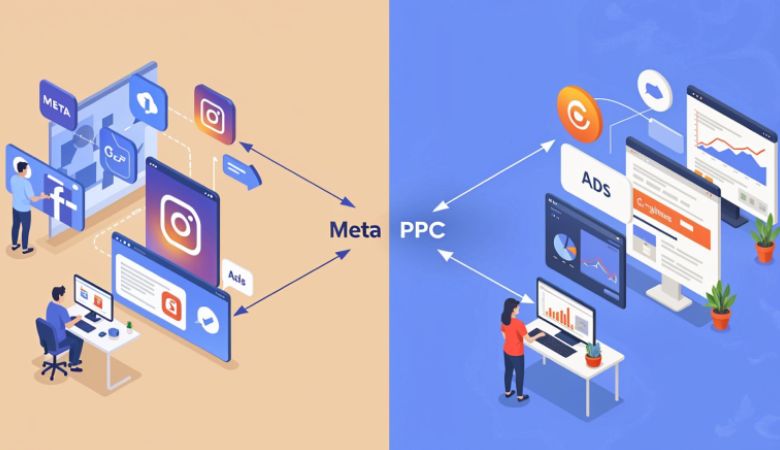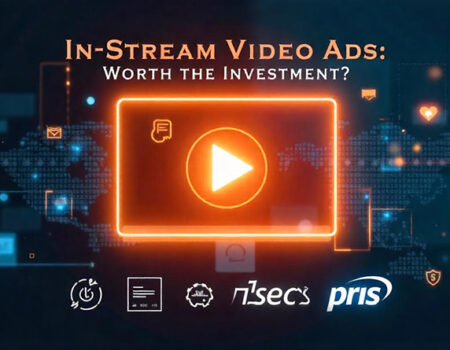How to Expand Your PPC Strategy from Meta Ads to Google Ads for Maximum Growth
Are You Leaving Money on the Table with Meta Ads Alone?
If your business thrives on Meta Ads but hasn’t ventured into Google Ads, you’re likely missing high-intent customers ready to buy. In today’s digital landscape, startups, small businesses, and e-commerce brands need a multi-platform approach to scale effectively. Meta Ads excel at sparking interest, but Google Ads capture demand—driving conversions from users actively searching for your products or services. This guide offers a clear, data-driven roadmap to diversify your PPC strategy, blending Meta’s creative power with Google’s precision targeting for measurable growth.
Drawing on insights from platforms like Statista and Google, we’ll explore why and when to expand, provide actionable steps to optimize Google Ads campaigns, and share tools to streamline cross-platform advertising strategies. Whether you’re a beginner or scaling an established campaign, this blog provides practical tips to maximize PPC campaign growth while considering Google’s user-focused quality standards.
Why Combine Meta and Google Ads?
Adding Google Ads to your Meta Ads strategy creates powerful synergy, engaging audiences across the buyer’s journey—from discovery to purchase. Here’s why diversification drives results.
Benefits of a Multi-Platform Approach
- Target High-Intent Users: Google Ads reach users searching specific terms, like “buy sustainable clothing,” signalling purchase readiness. This contrasts with Meta’s broader engagement focus.
- Massive Reach: Google handles over 8.5 billion daily searches (Statista, 2023), tapping audiences beyond Meta’s 3 billion monthly active users (Statista, 2024).
- Risk Mitigation: Relying only on Meta Ads risks volatility from algorithm changes or rising costs, with CPCs averaging $1.86-$3.50 (Statista, 2024). Google Ads, at $2.69 CPC (Statista, 2024), offer stability.
- Full-Funnel Strategy: Meta builds awareness (e.g., 10% engagement rates), while Google drives conversions (3-5% e-commerce rates, Statista, 2023), creating a seamless funnel.
Example: A skincare brand used Meta Ads for lifestyle content, then added Google Ads for “organic face cream” searches, boosting conversions by 35% in three months.
Busting Myths
Diversification doesn’t mean abandoning Meta Ads or needing a massive budget. With Google Ads’ flexible targeting, even $300-$500/month can yield insights, making it viable for startups.
When to Expand into Google Ads
Timing your move into Google Ads ensures efficiency and impact. Here’s how to spot the right moment.
Readiness Checklist
- Stable Meta Performance: Confirm that meta ads achieve steady results, like a 3:1 return on ad spend (ROAS) for retail (Statista, 2023).
- Budget Availability: You can dedicate 10-20% of your PPC budget ($300-$1,000/month for small businesses) to Google Ads without disrupting meta campaigns.
- Growth Limits: Rising Meta CPCs (e.g., above $2.50) or flat conversions signal untapped potential on Google.
- Seasonal Trends: Q4 holidays see 30% higher Google Ads conversions (Statista, 2024), which is ideal for testing.
- Clear Objectives: Expansion suits goals like increasing sales, capturing leads, or entering new markets (e.g., B2B SaaS targeting “CRM software”).
Strategic Timing Tips
- Plan Ahead: Start 6-8 weeks before peak seasons to optimize campaigns.
- Track Trends: Use Google Trends to identify rising search volumes, like “eco-friendly gifts” before holidays.
- Leverage Meta Data: High-performing Meta audiences (e.g., 25-44-year-olds) guide Google targeting.
Example: A local bakery expanded into Google Ads for “custom cakes near me” before Valentine’s Day, doubling orders by aligning with search spikes.
How to Launch Google Ads Successfully
Transitioning to Google Ads involves practical steps to optimize campaigns and align with Meta’s strengths. Below are five actionable strategies packed with tools, benchmarks, and industry-specific tips.
Step 1: Understand Your Audience
Effective Google Ads audience targeting hinges on translating Meta insights into search behavior.
- Analyze Meta Insights: Use Meta’s Audience Insights to pinpoint top segments (e.g., “parents interested in eco-products”). Map these to Google keywords like “sustainable baby toys.”
- Focus on Intent: Shift Meta’s storytelling (e.g., “Discover Wellness”) to Google’s solutions (e.g., “Buy Natural Supplements Today”).
- Targeting Options:
- Keywords: Target terms with 500-5,000 monthly searches, CPC $1-$3 (Google Keyword Planner).
- In-Market Audiences: Reach users researching your niche with 20% higher conversions (Google, 2024).
- Customer Match: Retarget Meta email lists, boosting engagement by 15% (Statista, 2023).
- Long-Tail Keywords: Phrases like “cloud software for small business” have lower competition and 10-15% better conversion rates (Statista, 2024).
- Industry Tip: For SaaS, target “demo” or “free trial” keywords; for local services, add geo-modifiers like “dentist in [city].”
Tool: SEMrush reveals competitor keywords, enhancing Google Keyword Planner’s insights.
Step 2: Start with Search Campaigns
Google Search campaigns are beginner-friendly and conversion-focused.
- Choose Keywords: Select 8-12 high-intent keywords per ad group, like “buy [product]” or “[service] online.” Aim for a Quality Score of 7+ to lower CPCs.
- Keyword Match Types:
- Broad Match: Captures varied searches but monitors for irrelevant clicks (e.g., “shoes” triggering “shoe repair”). Refine after 1-2 weeks.
- Phrase Match: Targets specific phrases (e.g., “organic dog food”), reducing costs by 10% (Statista, 2024).
- Exact Match: Locks are in proven terms for precision and are ideal for high-value keywords.
- Write Ads: Create Responsive Search Ads with 3-4 headlines (e.g., “Shop Eco-Friendly Gear,” “Save 15% Now”) and two descriptions. Add extensions (site links, callouts) to lift CTR by 10% (Google, 2024).
- Budget: Start at $5-20/day ($150-$600/month), suitable for lean startups. Small businesses average $1,000/month (Statista, 2024).
- ROAS Goals: Retail targets 4:1; B2B SaaS aims for 2:1 (Statista, 2023).
Example: A B2B SaaS firm targeting “project management tool” achieved a 4% CTR and 2.5:1 ROAS in two months using phrase match.
Tool: Google Ads Editor simplifies bulk keyword and ad management.
Step 3: Build on Meta Success
Meta Ads data accelerates Google Ads performance.
- Adapt Creative: Use Meta’s top ad copy (e.g., “Trusted by 1,000+ Customers”) in Google text ads. Later, repurpose visuals for Display campaigns.
- Sync Audiences: Create Google Similar Audiences from Meta Custom Audiences, with 25% higher engagement (Google, 2024).
- Funnel Strategy: Meta drives awareness (e.g., 12% video views), while Google retargets visitors with Dynamic Search Ads, recovering 10-15% of drop-offs (Statista, 2024).
- Industry Tip: E-commerce can retarget cart abandoners; local services can focus on “near me” retargeting.
Tool: Google Tag Manager unifies Meta Pixel and Google Ads tracking.
Step 4: Optimize for Performance
Optimization ensures efficiency and growth.
- Track Metrics:
- CTR: Target 2-5% (Statista, 2024).
- CPC: Keep below $3 (retail) or $5 (services).
- Conversion Rate: Aim for 3-5% (e-commerce), 8-12% (B2B leads).
- ROAS: Seek 3-5:1 for profitability.
- Refine Keywords: Pause low-CTR terms (below 1%) and add negative keywords (e.g., “free” for paid services) to cut waste by 15% (Google, 2024).
- Test Ads: Try CTAs like “Get Started” vs “Shop Now,” boosting CTR by 10% (Statista, 2023).
- Smart Bidding: Optimise bids by targeting CPA or Maximising Conversions, improving efficiency by 20% (Google, 2024).
- Analytics: Google Analytics 4 tracks bounce rates (target below 50%) and conversions (5-10% for e-commerce).
- Industry Tip: SaaS can optimize for demo signups; local services prioritize call tracking.
Tool: Looker Studio visualizes Meta and Google data for faster decisions.
Step 5: Scale with Advanced Formats
After Search success (e.g., ROAS above 3:1), explore new channels:
- Performance Max: Targets Search, Display, YouTube, and Gmail, with 18% higher conversions for e-commerce (Google, 2024). Provide product feeds and creative assets, letting AI optimize placements.
- Display Ads: Retarget Meta audiences, with CPCs at $0.59 (Statista, 2024). Use for brand reinforcement.
- Shopping Campaigns: Show products in search, driving 30% higher clicks for retail (Statista, 2023).
- Video Ads: Short YouTube ads complement Meta videos, with 15% better engagement (Google, 2024).
- Advanced Tip: Use Performance Max to diversify placements for high-competition keywords (CPC above $5); B2B can test LinkedIn retargeting alongside Google.
Budget Tip: Scale by 5-10% weekly, reallocating from lower-ROI Meta campaigns if needed.
Overcoming Challenges
Google Ads presents obstacles, but solutions keep you on track.
- Learning Curve: Complex keyword and bidding systems intimidate newcomers.
- Fix: Start with Google’s guided Search setup. Google Skillshop’s free courses build skills in 5-10 hours.
- Lean Budgets: Small businesses with $100-$300/month fear high costs.
- Fix: Focus on 3-5 exact match keywords with low CPCs ($0.50-$2). Test $5/day to validate ROI.
- Reporting Gaps: Google’s data can lack Meta’s depth.
- Fix: Use Google Analytics 4 or Looker Studio. Track CPA, averaging $50 for retail (Statista, 2024).
- Policy Issues: Ad disapprovals disrupt launches.
- Fix: Review Google’s policies (e.g., no exaggerated claims). Use preview tools to catch errors.
Example: A startup with a $200/month budget tested “niche fitness gear” keywords, achieving a 3% conversion rate by focusing on exact match and negative keywords.
Best Practices for Cross-Platform Success
These strategies ensure Meta and Google Ads work together:
- Consistent Branding: Unified messaging lifts conversions by 10% (Statista, 2023).
- Data Sharing: Meta insights refine Google targeting, saving 15% on costs (Google, 2024).
- Mobile Focus: Optimize for mobile, with 54% of smartphone PPC clicks (Statista, 2024).
- Testing: A/B test ads and landing pages, improving CTR by 8% (Statista, 2023).
- Quality Content: Ads and landing pages should reflect expertise and trustworthiness, aligning with Google’s E-E-A-T.
SaaS Tip: Highlight case studies in ads; local services should emphasize reviews.
Glossary for Beginners
- ROAS: Return on Ad Spend, measuring revenue per ad dollar (e.g., 4:1 means $4 earned per $1 spent).
- Quality Score: Google’s 1-10 keyword and ad relevance rating impacts CPC.
- Phrase Match: Keyword setting triggering ads for close variations (e.g., “dog food” matches “buy dog food”).
- Dynamic Search Ads: Ads auto-generated from your website, ideal for broad inventories.
- Negative Keywords: Terms excluded to avoid irrelevant clicks (e.g., “free” for premium products).
Partner with our Digital Marketing Agency
Ask Engage Coders to create a comprehensive and inclusive digital marketing plan that takes your business to new heights.
Conclusion: Start Your Google Ads Journey
Diversifying from Meta Ads to Google Ads transforms your PPC strategy, capturing high-intent audiences and driving 30-50% higher conversions (Statista, 2024). You’ll unlock sustainable growth by starting with Search campaigns, optimizing with data, and scaling strategically. Meta-first advertising tips, like repurposing audiences, make the transition efficient, while cross-platform strategies ensure a cohesive funnel.
Begin today: use Google Keyword Planner to find 5-10 keywords, set a $150-$300/month budget, and track results in Google Analytics. For deeper learning, explore Google Skillshop or tools like SEMrush. Your business deserves the growth only Google Ads can deliver.








